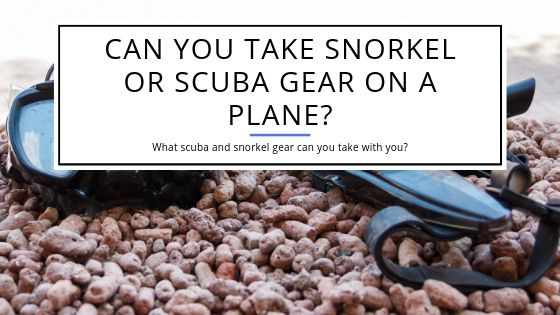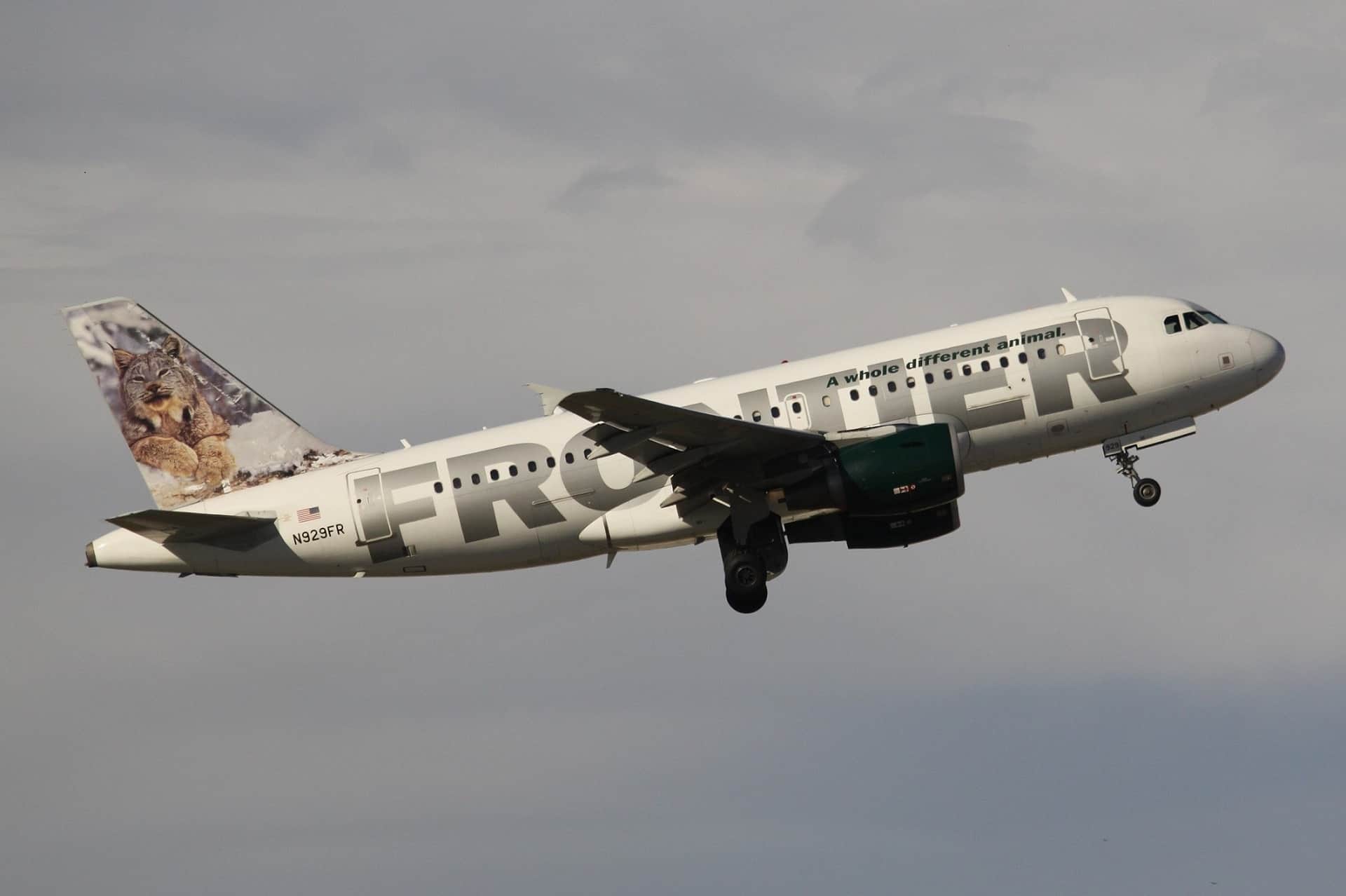Can You Take Snorkel or Scuba Gear On a Plane?
Tickets. Bathing suit. Dive Gear. You’ve got all the essentials for your scuba vacation, but there are still two things that stand in your way: packing your gear properly and getting your luggage through airport security. While some people rent their snorkel or scuba gear when on vacation, others make the trip specifically to snorkel or scuba dive. In such cases, you’re likely to be travelling with snorkel or scuba equipment which can be a bit tricky.
Can you take snorkel or scuba gear on a plane? Yes, you can at least take some gear on a plane. Pack your gear carefully so it won’t get damaged. Carry-on has different rules and you have to check whether you can bring certain gear with you inside the cabin or whether you have to check the gear.
Read on to find out about how to pack your gear to make it survive the flight and whether it’s worth investing in travel scuba gear or not. Pack your gear in your luggage without having to worry about dealing with those pesky extra charges for overweight luggage.
Choosing the Right Airline
Every airline has a set limit on the amount and weight of the luggage you can take onboard. Generally, lower cost airlines are likely to be more stringent about these rules. Even if you’ve flown with an airline before, if your next flight is a charter flights, check these limits again because they’re likely to be stricter. The right airline can really save you from the excess baggage cost.
Some airlines have a limit for free luggage check-in while others may charge you per piece. The cost for either may vary, so do your research to find the most cost-saving option. It’s also a good idea to check if the airline you’re considering has luggage check-in packages especially for divers. These packages may be less costly than the excess luggage cost.
What to Pack
When you’re travelling, you have limited luggage space so only pack the essentials. If you’re planning on going scuba diving in a popular tourist location, you can easily rent some of the bulkier scuba gear items such as a wetsuit, fins and so on.
The important gear which to some level will be customized specifically for you such as your dive computer, mask and regulator should definitely be packed in our suitcase.
Pack a Good Attitude
No we’re not talking about plastering a serial killer smile on your face. Just be courteous with the security and customs staff and don’t act defensive when they’re checking your luggage.
Packing Your Gear
While trolley bags seem great because you can comfortably wheel them around at the airport, they add extra weight which you could’ve used to pack your equipment. A lightweight bag such as a duffle bag is particularly useful.
Going Around the System
Your carry-on cabin bag can generally weigh 5kg. if you’ve got one final piece of equipment and all your other bags are stuffed, sneak it into the carry-on. Make sure that your carry-on isn’t a trolley bag because that is more likely to get weighed as opposed to a hand-carry bag. Walk in nonchalantly like your bag contains air so that you don’t run the risk of being hounded by baggage handlers who will certainly notice that your bag is overweight.
Avoid using this hack for electronic equipment such as your dive torch and computer since many airlines require all electronics to be checked in with their batteries removed.
Use Your Clothes like a Suitcase
You may have noticed wildlife photographers and hikers wearing vests with multiple compartments. These compartments are expandable, so if worst comes to worst and you face a problem with overweight luggage, you can squeeze at least around 15 pounds worth of items into your vest pockets.
Can You Bring Fins On a Plane?
Not only can you take fins on a plane, you can actually use them as a way to protect some of your more sensitive equipment. Travel bags either have a hard shell or are soft-sided. If you have a soft bag, create a makeshift shell using your fins and maybe your clothes on all sides. Snorkel or scuba equipment in your travel bag such as the dive computer and torch can be placed in the center to protect them from the force of impact when the bags are thrown into their luggage cabin or onto the carousel.
If you’re travelling for a short period of time, you probably don’t have a lot of luggage. In this case, pack your fins in your carry-on so that you have enough space for items like your dive computer in your suitcase.
If your trip is really short, you can leave your fins out and rent them instead.
How to Pack Your Mask
Your snorkel or scuba mask can take up quite a bit of space in your luggage. The mask and snorkel tube (if you have one) can easily be carried in a carry-on as you don’t have to deal with any batteries or crossing the carry-on weight limit.
Other Luggage-Packing Tips
If you have small items such as camera lenses for your underwater camera, you can roll them up inside your socks. If you don’t have socks, just ball them up in your wetsuit which will keep your items safe.
If you’ve made a protective wall using your fins etc. with your equipment in the center, there might be some gaps in between. Fill them with your clothes to keep your equipment in place and prevent anything from rolling around inside and chipping.
For small items like your dive computer batteries and so on, you can make use of plastic containers from your kitchen to keep items dry and safe. They’re lightweight so they won’t make your bag heavier. Ziplock bags also come in handy, but should be avoided since they’re not recyclable and can be very dangerous for sea creatures if they wash up into the ocean.
Some cloth bags are compact and can be folded into tiny squares when empty. If you’re having problems with overweight luggage, you can use one of these and place your batteries and other small items in them.
If you’re traveling with a companion, divide the snorkel or scuba gear in different bags so that if in case one gets lost, you won’t lose all your equipment.
Can You Fly With a Scuba Tank?
It is highly unadvisable to travel with a scuba tank or scuba weights. They’re extremely heavy and are likely to take up almost your entire weight-limit. In fact, if you’re going on a proper diving trip planned by a dive center, the cost of your tank is already being covered by them so you don’t need to take one with you. In fact, many divers are comfortable with just taking their mask and snorkel and renting any other equipment they might need.
If you still want to carry your own tank, make sure to pack it properly. Open the tank valve and empty out all the compressed air (this is not necessary if you’re travelling by road). Don’t attach the valve again just yet. Carry it separately since the tank will need to be inspected at security check points.
Cover the tank with a cardboard or padded-cloth wall (even your wetsuit can be used here) to prevent the surface from getting scratched. Make sure it’s stuck in place in your bag so it doesn’t roll around and damage any other equipment or sustain any damage itself.
Where Can You Put a BCD On a Plane?
For travel purposes, choose a BCD with plastic buckles since it will be more lightweight than one with metal buckles. Just fold it and pack it with the rest of your luggage items.
Can You Bring a Dive Knife On a Plane?
Even though there are many restrictions on carrying sharp objects on an airplane, dive knives are allowed granted that they are packed properly.
Keep the knife in its sheath. If you don’t have one, wrap it a few times in a thick towel. Don’t forget to mark what’s inside the towel to avoid arousing suspicion. Make sure it’s in your check-in luggage since knives of any kind are not allowed in carry-on luggage.
If you’re asked about it, don’t panic. As long as you tell security why you have a dive knife, you won’t get into any trouble.
Is It Worth Having Specific Scuba Travel Gear?
For frequent scuba travelers, travel diving gear can be a blessing. Here are a few ways they can really help lighten your load:
- The standard BCD weighs around 8 pounds or more depending on the type you get. Travel BCDs weigh around 5 pounds or less, have thinner padding and can easily be packed into any suitcase.
- Travel regulators weigh significantly less than regular regulators. If you use an octopus which combines a regulator and inflator, you’ll be able to save another few pounds.
- Many snorkelers and divers have given up on plastic travel fins because even though they’re lighter than rubber ones, they’re not as comfortable to use in the water. However, now there are variants of rubber travel fins which can be around half the weight of your regular fins.
- Lightweight travel wetsuits can fit more easily into your luggage.
It is important to remember that even though you can reduce the total weight of your snorkel or scuba gear, it comes with a price. For instance, travel regulators don’t fare well in cold water and are only suitable for warm-water dives. The investment in additional dive equipment is ideal for those travelling frequently to snorkel or scuba dive. If it’s an annual vacation, it’s better to have your own equipment at home and either travelling with that or renting it if you’re only going for a few days.
Do You Need Specific Scuba Travel Luggage?
While there are bags designed especially to transport scuba or snorkel equipment, they are not an essential part of your travel gear. You can get other lightweight duffle and nylon bags which can be just as useful for carrying your scuba or snorkel equipment without being as heavy as trolley bags.
Safe Travels
Travel divers and snorkelers are generally of three types:
- Those who carry all their own gear
- Those who carry only the essentials and rent the rest of the equipment like tanks and wetsuits
- Those who rent everything including their masks and snorkels
Regardless of which one of the three you are, make sure you’ve planned your snorkel or scuba trip properly. This includes packing your gear the right way if you’re taking it with you, and checking in advance if the place you’re going to will rent out equipment if you’re planning on renting it. As long as you plan your vacation thoroughly and in advance, you’ll get to your destination with damaging your equipment or fighting your way through security check posts.


